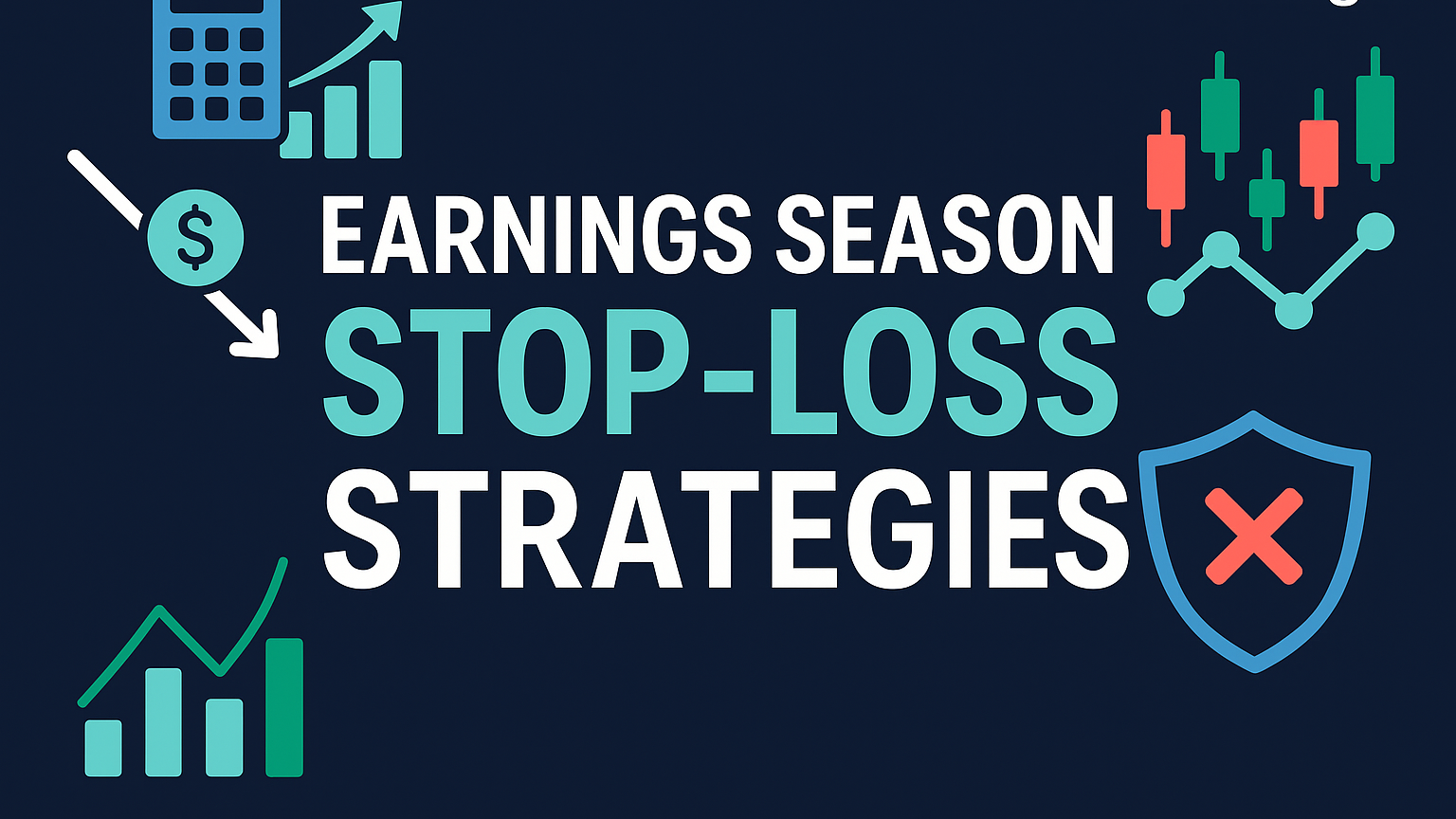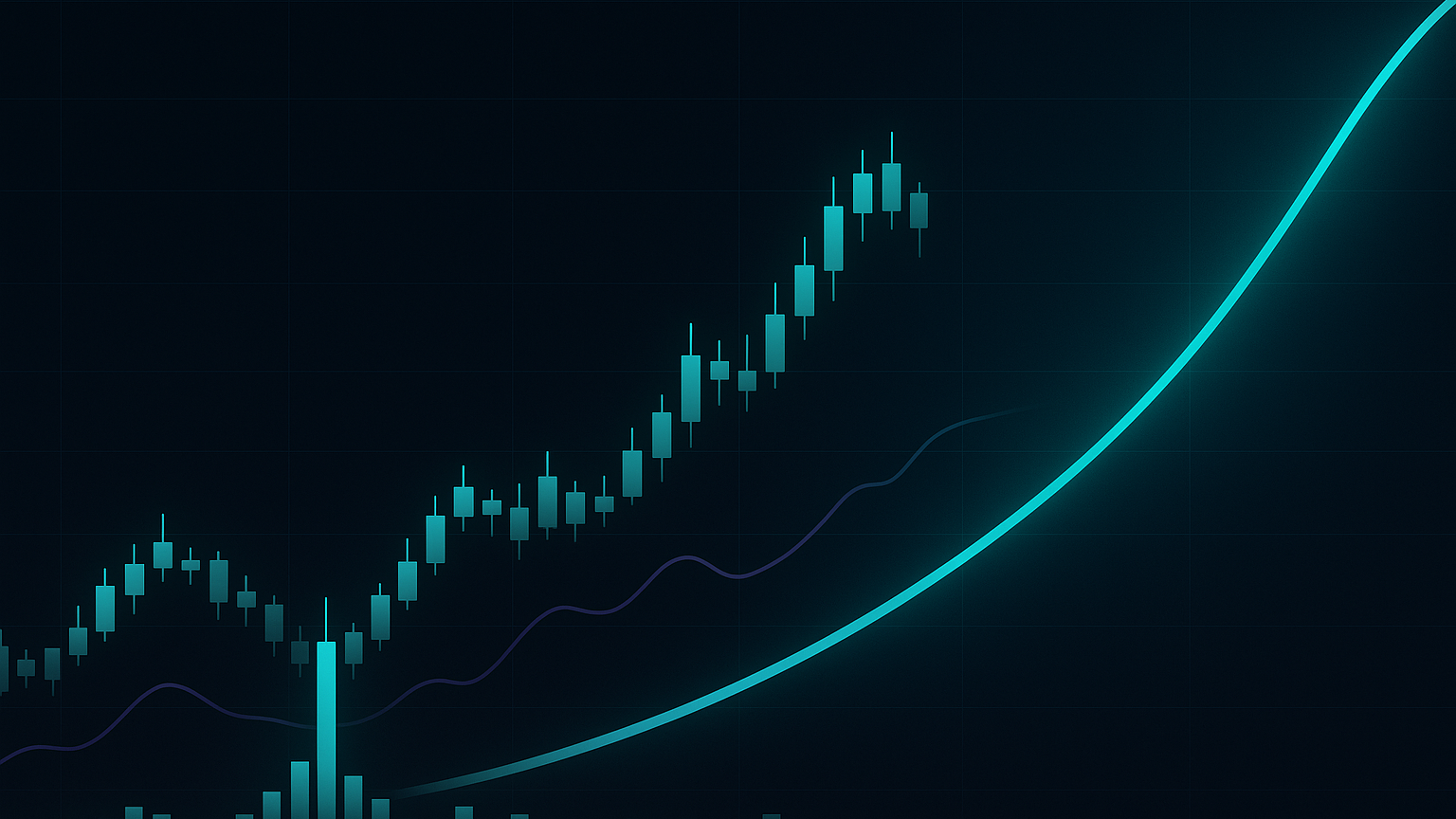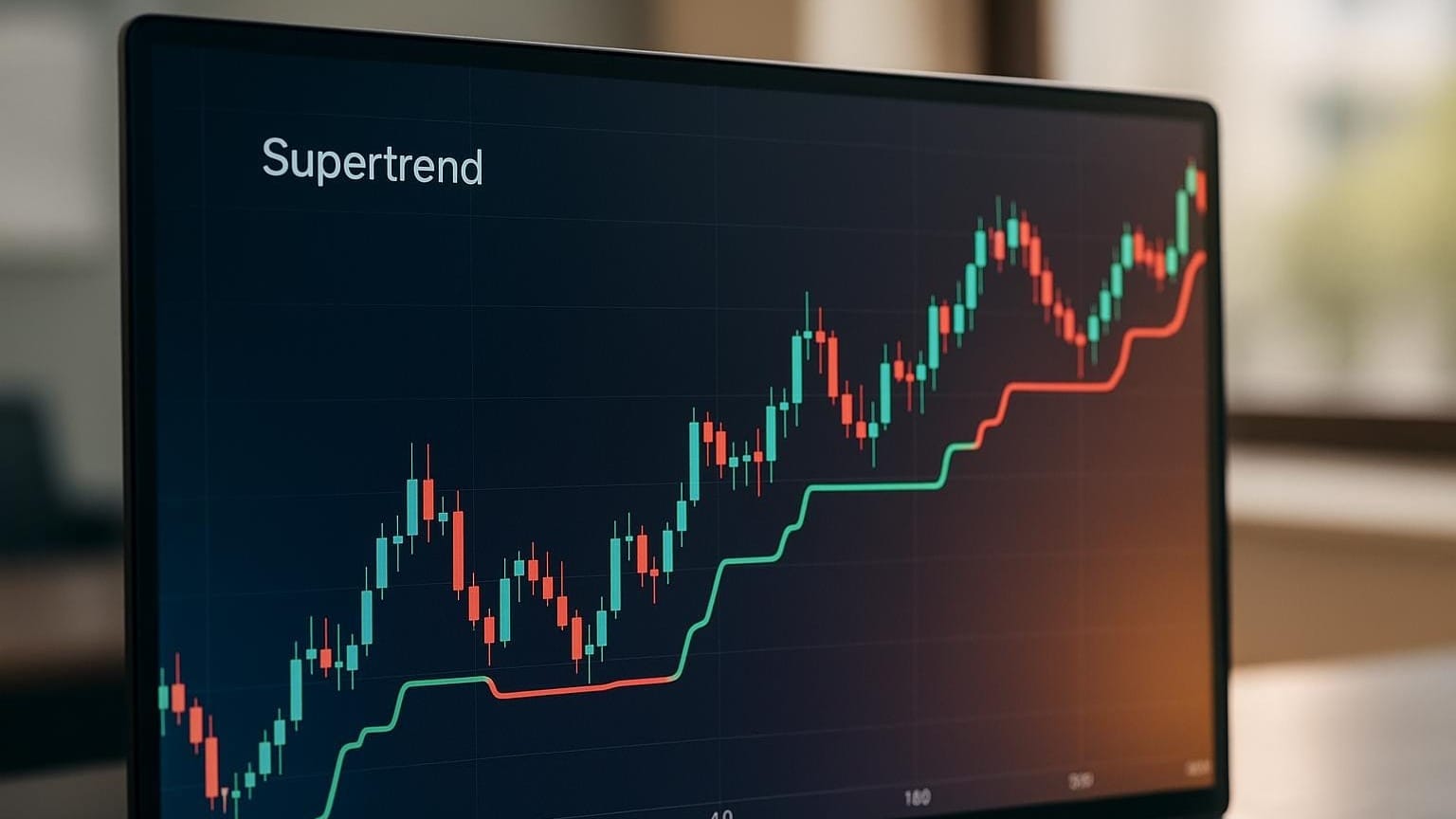Explore how delta hedging automation enhances risk management through real-time adjustments, trade execution, and continuous monitoring.
Delta hedging automation helps traders manage risk by automatically adjusting their portfolios to neutralize the impact of price changes in the underlying asset. This process relies on algorithms to calculate delta values, execute trades, and monitor positions in real-time. Here's what you need to know:
- Delta Hedging Basics: Delta measures how much an option's price changes with a $1 move in the underlying asset. Traders offset this risk by buying or selling shares to achieve a "delta-neutral" position. For a primer on the bid–ask spread, see this overview.
- Why Automate? Automation ensures faster, precise adjustments, eliminates human error, and reduces costs by optimizing trade execution.
- Who Benefits? Professional market makers, institutional investors, and advanced retail traders handling complex or high-volume portfolios gain the most from automation.
- Key Factors: Delta shifts based on moneyness, time to expiration, volatility, interest rates, and dividends. Automated systems continuously monitor and rebalance portfolios to maintain neutrality.
- Advanced Techniques: Dynamic hedging adjusts positions frequently, while static hedging requires minimal changes. Automation helps balance accuracy and transaction costs with smarter rebalancing strategies.
For traders, automating delta hedging simplifies risk management, especially in volatile markets. Platforms like LuxAlgo provide tools on TradingView for real-time calculations, trade execution, and strategy optimization, making automation accessible for experienced traders.
Key Concepts in Delta Hedging
Understanding Delta and Delta-Neutrality
Delta measures how much an option's price changes in response to a $1 move in the underlying asset. For call options, delta values range from 0 to 1, while put options have negative deltas between 0 and -1.
To achieve delta-neutrality, you adjust your portfolio so its total delta equals zero. This way, small price movements in the underlying asset have minimal impact on the portfolio's overall value. For instance, if you hold 10 call options with a delta of 0.5 each, your total delta exposure is 5.0. To neutralize this, you would short 500 shares of the underlying stock (since each share has a delta of 1.0).
While delta-neutrality reduces the directional risk tied to price movements of the underlying asset, it doesn't eliminate other risks like gamma, theta (time decay), or vega (implied volatility). However, it remains a valuable strategy for managing primary price risks.
This approach also creates opportunities to capitalize on other market dynamics. Market makers, for example, can profit from the bid-ask spread while maintaining delta-neutral positions. Similarly, options traders might benefit from changes in implied volatility or from time decay on short positions. With delta's basic behavior established, let's explore what causes it to fluctuate.
Factors That Affect Delta
Delta values are not static - they change based on several factors, requiring traders to monitor and adjust their positions regularly. Here are the key drivers of delta shifts:
- Moneyness: This refers to how close an option's strike price is to the current price of the underlying asset. For call options, delta approaches 1.0 as they move deeper in-the-money, while put options head toward -1.0. At-the-money options generally have deltas around 0.5 (calls) or -0.5 (puts), while out-of-the-money options have deltas closer to zero. For example, if a stock rises from $100 to $105, the delta for various strike prices can shift significantly.
- Time to expiration: As expiration nears, deltas behave differently depending on the option's moneyness. At-the-money options tend to hold their delta near 0.5 longer, while out-of-the-money options see their deltas decay toward zero more rapidly. In-the-money options, on the other hand, converge more quickly toward their intrinsic values.
- Implied volatility: Volatility affects delta, though less drastically than price or time. Higher implied volatility pushes the deltas of out-of-the-money options further from zero, making them more sensitive to price changes. Lower volatility has the opposite effect. For instance, during a volatility spike, an option with a previously negligible delta might require hedging due to its increased sensitivity.
- Interest rates and dividend yields: These factors can cause subtle shifts in delta, particularly for longer-term options. Rising interest rates generally increase the delta of calls and decrease the delta of puts, while anticipated dividends tend to have the opposite effect.
Rebalancing Frequency and Trade-Offs
One of the biggest challenges in delta hedging is deciding how often to rebalance. In theory, continuous rebalancing would eliminate all delta exposure, but in practice, transaction costs make this approach unrealistic.
- High-frequency rebalancing: This involves frequent adjustments, such as every few minutes or after significant price movements. While it helps manage risk more precisely, it can lead to high trading costs, especially for market makers executing hundreds of trades. Bid-ask spreads and market impact costs can eat into profits.
- Low-frequency rebalancing: Rebalancing on a daily or weekly basis lowers trading costs but leaves the portfolio vulnerable to larger gamma losses if the underlying asset experiences big price swings between adjustments.
To strike a balance, many automated systems use dynamic rebalancing triggers instead of fixed intervals. For instance, rebalancing might occur when the portfolio's net delta exceeds a certain threshold or when the underlying asset moves beyond a predefined range.
Another approach is volatility-adjusted rebalancing, where adjustments are more frequent during periods of high market volatility and less frequent during calmer times. For example, during the turbulent market conditions of March 2020, many systems shifted from daily to hourly rebalancing to better manage gamma risks.
The best rebalancing strategy depends on factors like portfolio size, transaction costs, market volatility, and individual risk preferences. Automated systems are designed to continuously adapt and refine these strategies to maintain effective delta hedging.
How Does Delta Hedging Work In Algorithmic Options Trading? - Stock and Options Playbook
How Delta Hedging Automation Works
Automated delta hedging takes the intricate process of calculations and trading adjustments and turns it into a streamlined, automated workflow. With algorithmic trading expected to account for over 80% of global equity volume by 2025 [1], mastering these systems is becoming a must for modern traders. This process revolves around three primary components: calculation, execution, and continuous monitoring.
Automated Delta Calculation
At the heart of any automated delta hedging system is its ability to perform complex calculations in real time. These systems use established options pricing models to continuously calculate delta values as market conditions change.
Models like Black-Scholes, binomial trees, and Monte Carlo simulations are commonly employed. They calculate delta as the first derivative of the pricing formula, updating estimates based on real-time data such as stock prices, interest rates, implied volatility, and time-to-expiration [2].
It’s important to remember that delta serves as an estimate rather than a precise metric - it provides an approximation of how the price of an option might move relative to changes in the underlying asset’s price [2].
Once the system has these delta estimates, the next step is executing trades and maintaining balance within the portfolio.
Executing Trades Automatically
After calculating the necessary hedge adjustments, the system executes trades automatically through direct electronic exchange interfaces. This ensures quick adjustments to maintain delta neutrality, responding to market shifts much faster than manual trading ever could.
Monitoring and Rebalancing
The job doesn’t stop after execution. Automated systems continuously monitor delta exposure, ensuring that any deviations from the desired balance are promptly addressed. If the delta drifts beyond preset thresholds, the system triggers rebalancing trades. This ongoing process helps maintain portfolio neutrality throughout the trading day, adapting seamlessly to market dynamics.
Advanced Delta Hedging Techniques
Building on the earlier discussion about automated calculation and execution, these techniques take risk management and cost efficiency to the next level. Once you've grasped the basics of automated delta hedging, you can delve into more refined strategies that leverage automation for even better results. These advanced methods require continuous monitoring and precise execution - tasks that automation is exceptionally suited for.
Dynamic vs. Static Hedging
Your choice between dynamic and static hedging significantly impacts the way you approach delta hedging. Let’s break them down:
Dynamic delta hedging involves constantly adjusting hedge positions to maintain a delta-neutral portfolio as the value of the underlying asset fluctuates [3]. This method is highly responsive to market changes, making it ideal for volatile conditions.
Static delta hedging, on the other hand, sets up a hedge at the outset with minimal or no adjustments afterward. While simpler, this approach assumes the initial hedge will suffice throughout the option's life, which may not always hold true.
| Feature | Dynamic Delta Hedging | Static Delta Hedging |
|---|---|---|
| Rebalancing | Active, requiring frequent monitoring and adjustments to hedge positions | Passive, with minimal or no adjustments after the initial hedge is set |
| Market Adaptability | Quickly adapts to changing market conditions, including price and volatility shifts | Less adaptable, potentially ineffective in volatile markets |
| Market Suitability | Ideal for volatile markets with rapid price changes | Better for stable markets with limited price movement |
| Accuracy | Offers precise hedging by continuously adjusting to price changes | Less precise due to lack of ongoing adjustments |
| Transaction Costs | Higher, due to frequent rebalancing | Lower, as fewer trades are required |
Dynamic hedging offers better precision in managing risk, but it comes at the cost of frequent transactions. This is where automation steps in, making the process more efficient by handling the continuous adjustments automatically. Without automation, managing a dynamic hedging strategy manually would be both time-consuming and expensive.
Optimizing Rebalancing Strategies
One of the most critical aspects of automated delta hedging is fine-tuning your rebalancing rules. Intelligent automation uses backtesting and simulations to configure thresholds that balance hedge accuracy with transaction costs. For a practical case study on rules-based delta hedging, see this CME primer.
By analyzing historical data, automated systems can determine the ideal rebalancing frequency and threshold levels. This ensures you avoid over-hedging, which can drive up costs, and under-hedging, which leaves you exposed to unnecessary risk. The result is a data-driven approach that maximizes efficiency while keeping risks in check.
Reducing Transaction Costs
Automation doesn’t just improve precision - it also focuses on cutting down transaction costs. These costs can quickly eat into the benefits of delta hedging, but automation offers several ways to keep them in check.
- Partial Fill Management: Automated tools track partial fills and rounding remainders to improve hedging accuracy without inflating costs.
- Passive Execution Logic: Instead of relying on aggressive market orders, automated systems use limit orders to wait for favorable fills, significantly reducing execution costs.
- Fine-Tuned Execution: Automation adjusts execution parameters to minimize slippage and market impact, which would be nearly impossible to manage manually across multiple positions and varying market conditions.
Another major advantage is the reduction in manual oversight. Traditional delta hedging often requires constant monitoring, which can lead to labor-intensive processes and a high volume of costly transactions. Automation eliminates this burden while maintaining the accuracy needed for effective risk management [4].
Technology and Tools for Delta Hedging Automation
LuxAlgo: A Comprehensive Solution
LuxAlgo is the world's largest provider of trading indicators. It provides exclusive tools on TradingView and an AI platform for backtesting that streamline trading processes (learn more).
The platform includes three primary toolkits designed for thorough market analysis:
- Price Action Concepts (PAC): Detects patterns and analyzes market structures.
- Signals & Overlays (S&O): Provides customizable signal algorithms to suit various trading strategies.
- Oscillator Matrix (OSC): Tracks real-time divergence and money flow insights.
One of LuxAlgo's standout resources is its AI Backtesting Assistant, which helps evaluate and optimize delta hedging strategies across multiple tickers and timeframes. Traders can adjust automation parameters before applying them in live markets, adding a layer of precision to their hedging efforts. You can also review the official documentation for detailed capabilities.
Specialized Features for Delta Hedging
LuxAlgo addresses the specific needs of delta hedging automation with tools like Volume Delta Candles and Delta Flow Profile, which provide insights into buying and selling pressure. These features enable automated systems to make more informed decisions [A][B][C].
Additional tools, such as screeners, backtesters, and a custom alert creator, simplify setup filtering and allow for instant rebalancing directly on TradingView.
Why Choose LuxAlgo?
LuxAlgo goes beyond technical capabilities by offering strategic benefits that simplify workflow and improve efficiency. Its all-in-one interface reduces both complexity and cost. This streamlined approach enhances the reliability of automated systems.
The platform also fosters a collaborative environment with a global community of users. Traders can access shared strategies, participate in forums, and use educational resources to refine their delta hedging techniques.
LuxAlgo offers two subscription plans aligned with common use cases:
- Premium: $39.99/month – advanced signals, alerts, and oscillator tools on TradingView. Compare plans
- Ultimate: $59.99/month – includes the AI Backtesting platform. Explore AI Backtesting
Additionally, LuxAlgo provides 24/7 live support to quickly resolve technical issues, helping ensure uninterrupted hedging operations.
Conclusion and Key Takeaways
Automated delta hedging has reshaped risk management by enabling traders to maintain delta neutrality with speed and accuracy. By reducing human errors and executing trades rapidly, automation ensures precision even in highly volatile markets. This advancement opens the door to more strategic and efficient portfolio management.
The Future of Delta Hedging
Automation is quickly becoming the go-to method for both institutional and retail traders. In an era where markets are increasingly fast-paced and intricate, manual hedging methods often fall short. Today’s platforms harness artificial intelligence to fine-tune rebalancing schedules and cut transaction costs through smarter execution algorithms. With real-time data, advanced analytics, and seamless trade execution, traders gain a significant edge - allowing them to focus more on crafting strategies and optimizing portfolios rather than operational details.
Next Steps for Traders
With automation offering clear advantages, incorporating these tools into your trading strategy is the logical next step. By taking advantage of reduced transaction costs and smarter insights, traders can refine their approach to hedging.
For those ready to dive into automated delta hedging, LuxAlgo provides resources tailored for this purpose. These include advanced AI-driven backtesting and analytics designed to help traders enhance their strategies, plus the dedicated AI Backtesting platform.
Begin by exploring what LuxAlgo has to offer. Use its capabilities to analyze market conditions and test automated strategies in real-time. With seamless integration options, you can quickly start refining your approach and adapting to today’s sophisticated trading environment.
Automating your delta hedging strategy isn’t just about keeping up - it’s about staying ahead. The tools and technology are ready to use, making now the perfect time to embrace automation and position yourself for long-term success.
FAQs
What are the benefits of using automation for delta hedging compared to manual methods?
Automating delta hedging brings clear benefits over traditional manual approaches, mainly by enabling real-time adjustments to hedge positions with precision. These automated systems constantly track market fluctuations and execute trades instantly, cutting out the delays that come with human reaction times. This not only speeds up the process but also minimizes risks tied to errors like mispricing or over-hedging.
With automation, traders can maintain ideal hedge ratios more consistently, even during periods of high market volatility. The result? Faster trade execution, greater accuracy, and a smoother trading process - all of which give traders a competitive edge in fast-changing market environments.
What challenges do traders face when choosing rebalancing frequency in delta hedging, and how can automation help?
Traders often face a tough choice: rebalance frequently and rack up transaction costs, or rebalance less often and risk greater exposure to market fluctuations. Frequent rebalancing keeps exposure in check but can eat into profits due to higher costs. On the flip side, less frequent rebalancing saves on costs but leaves positions more open to unpredictable market swings.
This is where automation steps in to make life easier. Automated systems allow for real-time monitoring and precise execution of rebalancing actions. These tools can dynamically adjust how often rebalancing occurs, depending on market conditions. The result? Traders can strike a better balance between managing costs and maintaining effective hedge ratios. Plus, automation cuts down on human errors and speeds up reactions to market volatility, making the entire process smoother and more dependable.
How can traders use platforms like LuxAlgo to automate delta hedging effectively, especially during market volatility?
Traders can turn to platforms like LuxAlgo to streamline delta hedging through advanced tools that assist with adjusting hedge positions. These features help manage risk by keeping portfolios closer to delta-neutral, minimizing exposure to sudden price shifts, and offering protection during unpredictable market swings.
By incorporating tools such as volatility indicators and rules-based adjustments, LuxAlgo makes risk management more efficient. This allows traders to concentrate on strategic decisions, knowing their positions stay balanced and aligned with shifting market conditions.
References
LuxAlgo Resources
- LuxAlgo – Official Site
- ICT Immediate Rebalance Concept (Blog)
- Algorithmic Trading (Blog Tag)
- ICT Immediate Rebalance (Indicator)
- AI Backtesting Assistant – Main Page
- AI Backtesting Assistant – Docs
- AI Backtesting Assistant – Breakdown (Blog)
- Volume Delta Candles (Indicator)
- Delta Flow Profile (Indicator)
- Delta Zigzag (Indicator)
- ICT Immediate Rebalance Toolkit (Indicator)
- LuxAlgo – Plans
- Explore AI Backtesting
- Learn more about LuxAlgo
- New AI Backtesting Features (Blog)
External Resources
- Bid–Ask Spread – Investopedia
- Volatility & Implied Volatility – Cboe
- Theta (Time Decay) – Investopedia
- Black–Scholes Model – Wikipedia
- Monte Carlo Simulations in Finance – Wikipedia
- Delta – Options Industry Council
- BIS Quarterly Review – Algorithmic Trading
- Delta Hedging – CME Group
- Delta Hedging – Investopedia
- TradingView – Charting Platform








